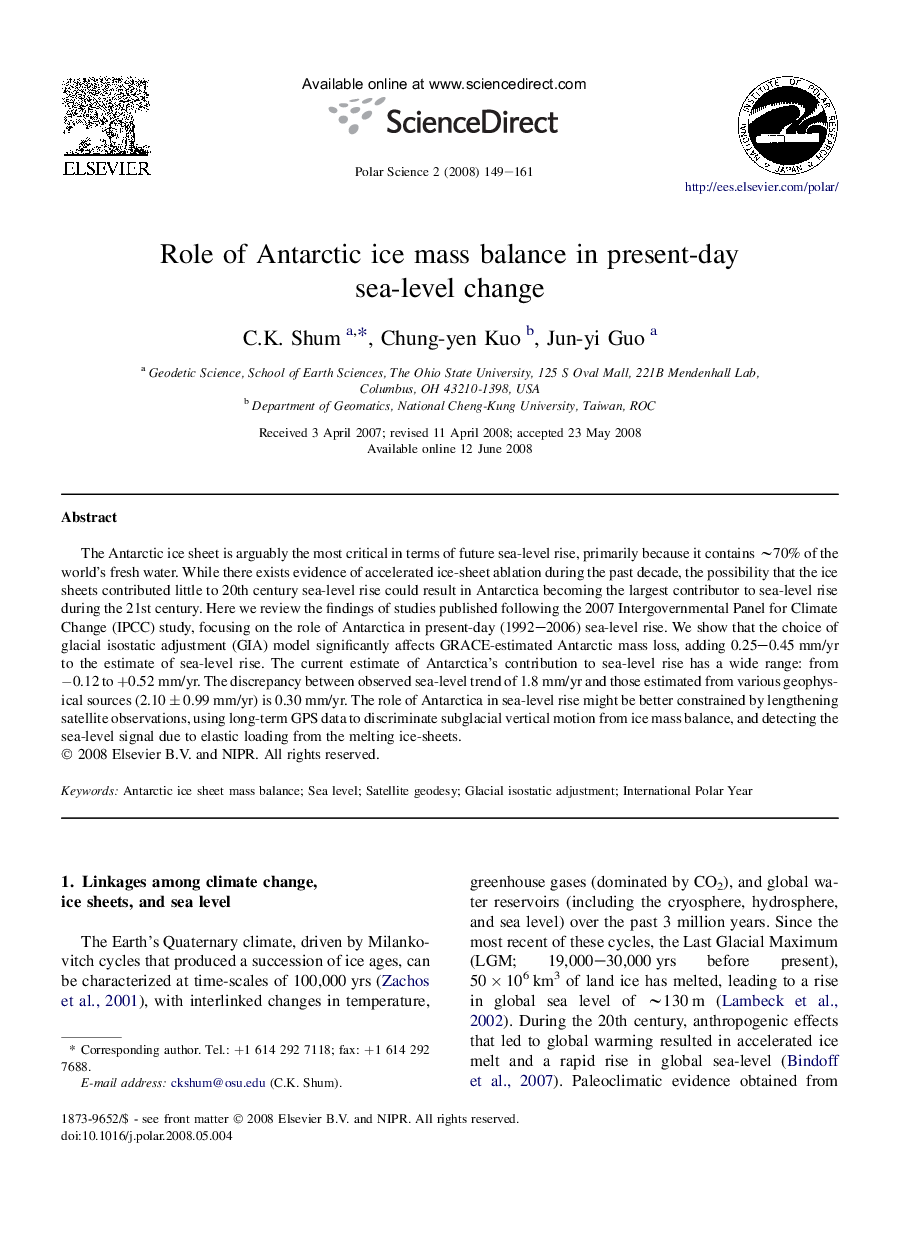| Article ID | Journal | Published Year | Pages | File Type |
|---|---|---|---|---|
| 4683462 | Polar Science | 2008 | 13 Pages |
The Antarctic ice sheet is arguably the most critical in terms of future sea-level rise, primarily because it contains ∼70% of the world's fresh water. While there exists evidence of accelerated ice-sheet ablation during the past decade, the possibility that the ice sheets contributed little to 20th century sea-level rise could result in Antarctica becoming the largest contributor to sea-level rise during the 21st century. Here we review the findings of studies published following the 2007 Intergovernmental Panel for Climate Change (IPCC) study, focusing on the role of Antarctica in present-day (1992–2006) sea-level rise. We show that the choice of glacial isostatic adjustment (GIA) model significantly affects GRACE-estimated Antarctic mass loss, adding 0.25–0.45 mm/yr to the estimate of sea-level rise. The current estimate of Antarctica's contribution to sea-level rise has a wide range: from −0.12 to +0.52 mm/yr. The discrepancy between observed sea-level trend of 1.8 mm/yr and those estimated from various geophysical sources (2.10 ± 0.99 mm/yr) is 0.30 mm/yr. The role of Antarctica in sea-level rise might be better constrained by lengthening satellite observations, using long-term GPS data to discriminate subglacial vertical motion from ice mass balance, and detecting the sea-level signal due to elastic loading from the melting ice-sheets.
